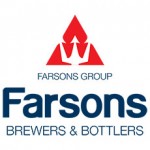Flimkien għal Ambjent Aħjar (FAA) recognises the need for growth in the tourism sector and its contribution to the socio-economic well being of the Maltese Islands as well as the importance of regenerating and diversifying the tourism product in order to secure our competitiveness in the sector. Tourist trends also indicate that, given the present climate in the sector and the strong environmental consciousness of continental tourists, environmentally sustainable projects are resulting in better profitability and higher rate of returning tourists.
As such FAA questions whether the project being proposed for the Seabank hotel, Mellieha is the best choice for the area and for the developer in order to achieve desirable high revenue and sustainable solutions. The project to add 340 bedrooms and a theme park to the present Seabank hotel will create a massive, six-storey, all-inclusive resort with a theme park open only in the high season and closed during the winter months. Does this justify the building of such a disproportionately-large resort (photomontages may be viewed on www.faa.org.mt) on an agricultural footprint, which will compromise the scenic views of Mellieha and have a negative impact on the tourism and the ecology of the area? Unlike other hotel operators in the area, this hotel is not known for its sensitivity to its surroundings; the owners of this hotel have already been allowed to ruin part of the coastline through repeated building abuse at their beach concession, abuse which was legalised by sanctioning with monotonous regularity. Should the destruction of the real character that Mellieha is renowned for be allowed to continue?
Tourists at all-inclusive resorts are shuttled directly to their hotel which most of them do not leave until it is time to fly out again, with little benefit to other operators like shops, restaurants, bars and museums which do not benefit from the hotel residents’ patronage.
Additionally the problems of traffic, air and noise pollution associated with the theme parks would further impact the natural setting of the Ghadira area next to the bird sanctuary. The Northwest Local Plan (NWLP) designates the site as suitable for “restrained development” and an Area of High Nature Value farmland” since fields on and around the site have one of the few remaining examples of traditional irrigation systems as well as protected Level 1 Area of Ecological Importance. The Environment Impact Statement admits that the protected “Il-Hofra marshland will no longer receive run-off water from Wied Ingraw”. MEPA Natural Cultural Heritage Committee maintains that the proposed development does not conform to important aspects of the NWLP agricultural strategy adding “by no stretch of the imagination can this be considered ‘restrained’ development” and therefore recommends refusal, yet the MEPA Planning Directorate is recommending approval. Is the MEPA Board going to ignore its experts yet again?
Instead of gobbling up high value farmland for a facility that closes for half the year, would it not be more beneficial in the long-term to use part of the theme-park footprint to expand the hotel on a more harmonious scale, with a lower profile? This would blend better with its rural surroundings and have a lower negative impact on the area and its touristic appeal. Such a hotel offering sea in summer and agro-tourism during the rest of the year would boost shoulder-month tourist arrivals and have a spin-off effect all the way to Gozo.
The Seabank benefits from its attractive surroundings as well as from its proximity to the village of Mellieha, which last year won the EU Destination of Excellence Award. The Mellieha Local Council has won the local councils award for commercial enhancement of tourism, been made responsible for the Torri l-Ahmar and wartime pill-box, is promoting agro tourism in Manikata and is creating a programme of heritage trails. Is this the right place for a theme park?
‘Sustainability’ has become every politician’s buzz-word and supposedly MEPA’s raison d’être, but when it comes to the crunch, are we prepared to see it through, or do we just cave in to ‘tourists at all costs’ projects? Today’s decision at MEPA will reflect Government’s real commitment to sustainability. FAA maintains that theme park resorts should be located in areas which lack attractions. In Mellieha, on the other hand, the context is the asset itself. A more harmonious project which can provide summer sun and focus on winter activity holidays would increase tourist numbers without jeopardising the tourist appeal and ecology of the area. This would be more in line with official tourism policy to promote Malta’s unique character, while the hotel itself would have a higher earning and employment potential – a win-win situation all round.
Astrid Vella
Coordinator, FAA



